In Chéticamp our host, photographer and guide to cracking lobsters was Michel. He’s lived in cities all over North America and moved to this small coastal village four years ago. Since then, he’s embedded himself in the community, mostly through photography. He photographs the fishermen, the local theatre productions, the Mi-Carême festival, the wildlife. After dinner he took us to photograph the sunset at the harbour, where he gestured at the nearby snowcrab processing plant’s transport truck with a 50-ft landscape photo of the wharf printed on it. “I took that,” he said, then laughed. “Got a whole lot of snowcrab for it.”
The conversation I’m going to be referencing about climate change actually happened the following morning while Michel and I were driving back into Chéticamp from Cape Breton Highlands National Park, but my most evocative photographs are from that sunset at the harbour. I’m using them in an effort to juxtapose beauty and reality.
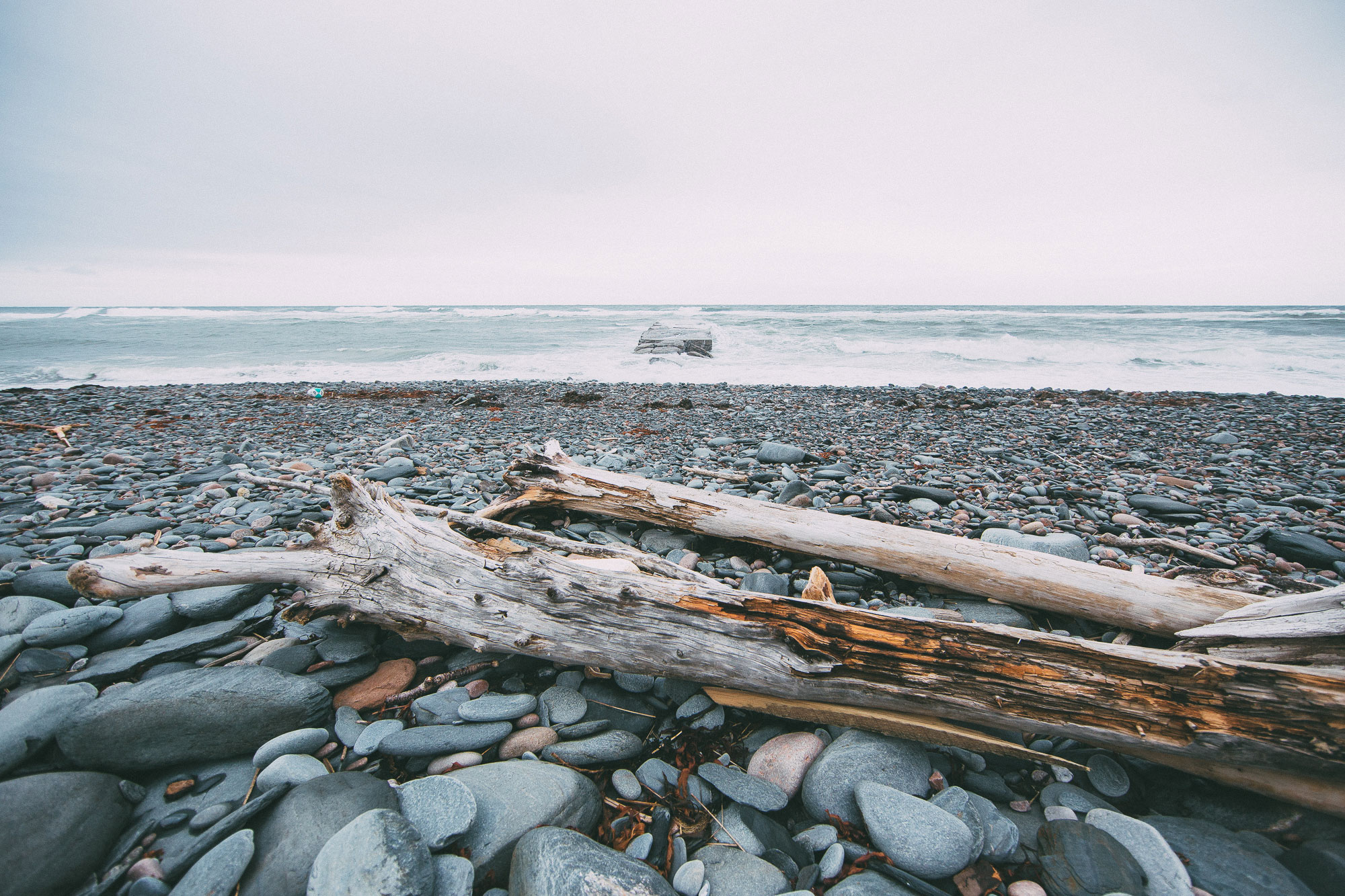

The coastline was windy, and as we drove the main street through Chéticamp the ocean waves pressed against the rocky shoreline and the colourful fishing boats in the harbour. The sky was overcast. Not a lot of people were out. Throughout the morning, our conversation had traced a lot of subjects, from moose hunting to the 2015 flash flood of Chéticamp Campground to the effects of Les Suêtes winds on the west coast of Cape Breton. On that street in town, however, Michel grew uncharacteristically quiet.
“It won’t be long, you know,” he said. “This will be under water.”

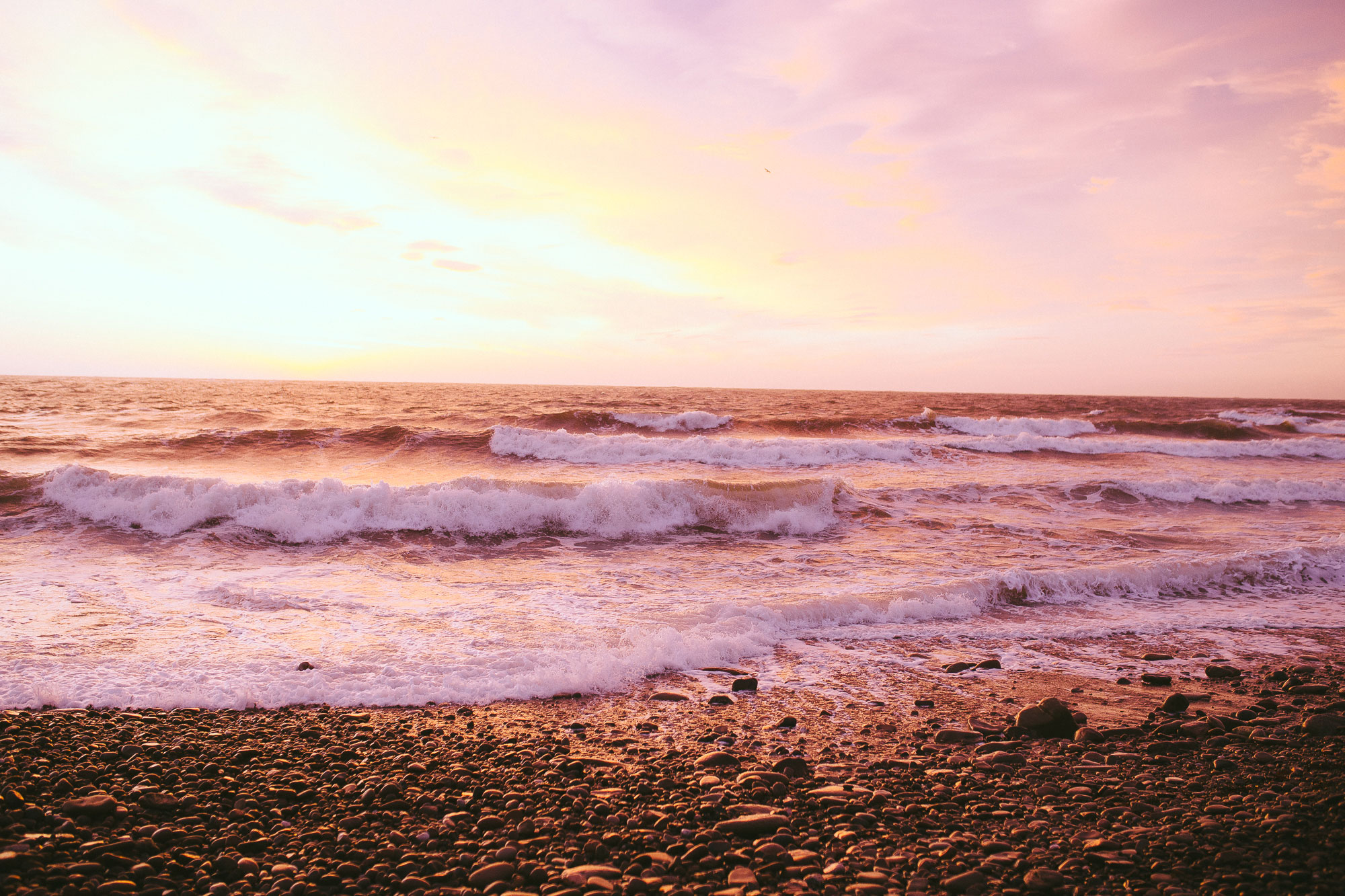
That hit me. I looked out the window and saw people whose homes had a few decades left before rising sea levels would sweep the foundation out from under them. The houses were right there, some decades or hundreds of years old. The ocean was there too, like a ticking time bomb.
I’m from Ontario. In my head, I know that the communities around me are already facing the consequences of climate change—last year’s drought, this year’s floods—but in my heart Ontario still feels very insulated from climate change. We have the infrastructure for relative food security, we’re not in the path of major weather systems, our cities are not on the coast. So we can read the news of forest fires in Alberta or hurricanes on the Eastern Seaboard, but it doesn’t affect us in the immediate sense.
Not in the sense of ocean waves pressing against people’s homes in Chéticamp.
The coastal communities of Nova Scotia have been the focus of regional, provincial and federal projects to research how to mitigate the effects of climate change. Organizations such as the Ecological Action Centre in Halifax are working on community-based adaptation. In 2013 they completed a study based out of Chéticamp looking at the threat of rising sea levels, erosion, extreme rainfall events and storm surges.
Scientists used 3D mapping data of the current coastline to predict sea level rise of 1.1 metres by the year 2100 and possible storm surges of 3.78 metres for the area. As I read the data I stare at the wall across the table from me and imagine the harbour front of Chéticamp, trying to visualize what that meant. I can’t.
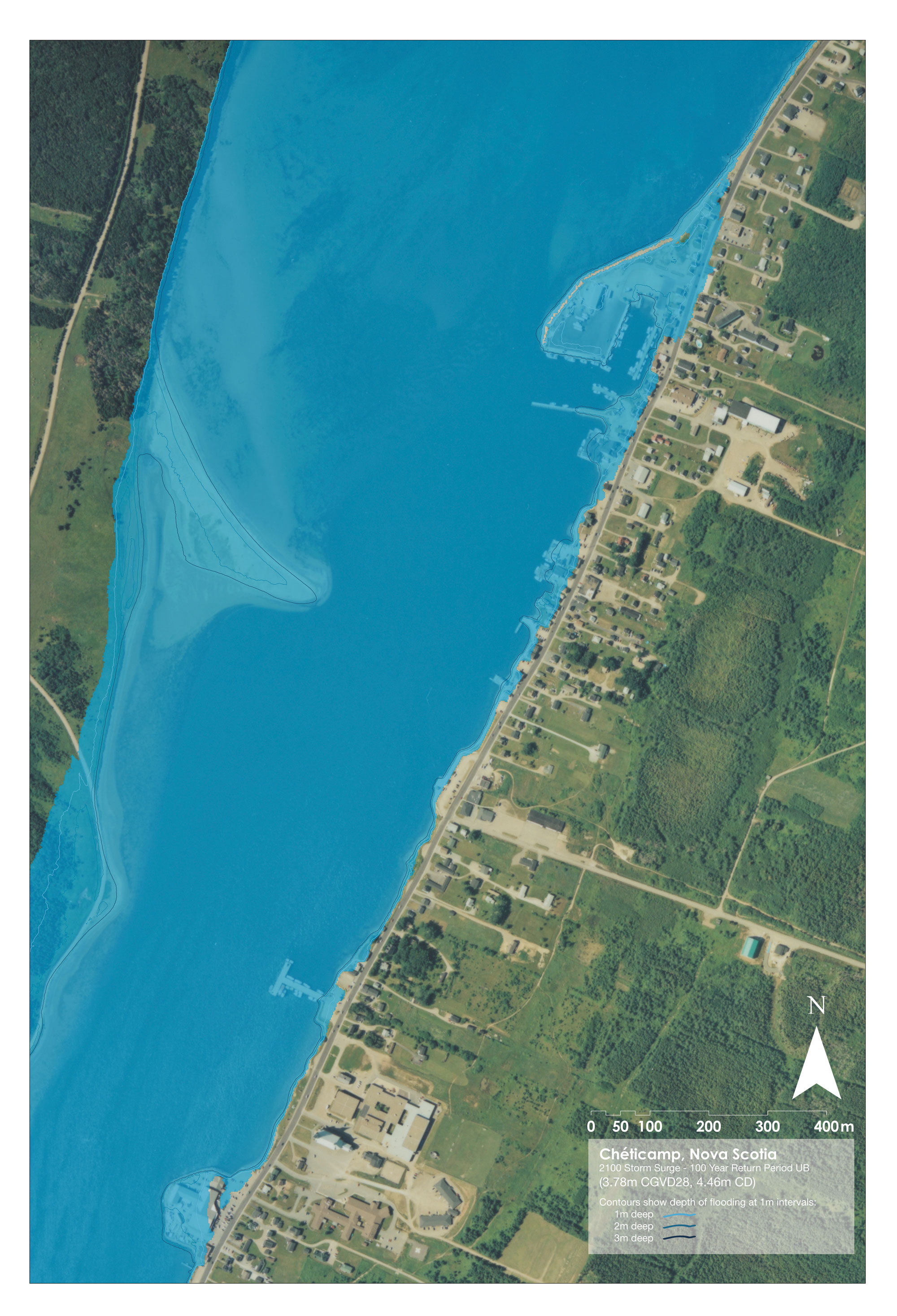
I come across an interview with Dalhousie marine biologist Boris Worm explaining the significance of the 2016 report from United States National Oceanic and Atmospheric Administration. “Nova Scotia is at the losing end of this game,” he said. “Even a single foot of sea level rise would increase the likelihood of these floods 25-fold, meaning it doesn’t happen every five years it happens five times a year. Think about that. That means all the time. And that’s just a foot—we’re talking about eight feet.”
Later, I find a presentation that from what I can tell is related back to the 2013 study in Chéticamp. “The climate is changing,” it reads, “and changes are already being felt.”
“Damages impact every aspect of our lives.”
The combination of infrastructure, ecology, geology, water systems, (etc.) and climate change is so complex that it’s difficult to wrap my head around, particularly with the short amount of time that I’ve spent researching this. I read about storm tracks, sediment mobilization and saltwater intrusion. I read, for example, that climate change will mean that coastal beaches experience large-scale morphologic adjustments to absorb augmented wave energy. I didn’t even know that existed.
I imagine how my reaction, from rural Ontario, differs from the coastal residents of Nova Scotia who are meeting these consequences head on. Am I more overwhelemed, having just been introduced to the Chéticamp harbour only to find out that its foundation is increasingly tenuous? Or am I less intimately connected than the fishermen whose boats were inherited from their fathers and grandfathers? Less shocked than the community that for generations has depended on the reliability of coastal ecology, these people whose lives and livelihoods depend on their ability to adequately prepare for an inevitable crisis that no one in the world can appropriately imagine?
The questions quickly scale out of reach, and I decide to leave it at that. I remind myself of the conclusion of my conversation with Michel, after I commented on how thinking too deeply about climate change and environmental disruption can spiral towards despair.
“You take one step at a time,” he said. “Today is a beautiful today and this place is a beautiful place.” Perhaps realizing he’d gotten too poetic, he added: “That’s something my grandfather used to say, if you got one foot in the past and one foot in the future you end up pissing all over today.”
I laughed. To be hopeful with the ocean rising beside you seems as foolhardy as you can get, but as we turned back to his house with the wind pushing against us, it seemed like as good a foundation as any.
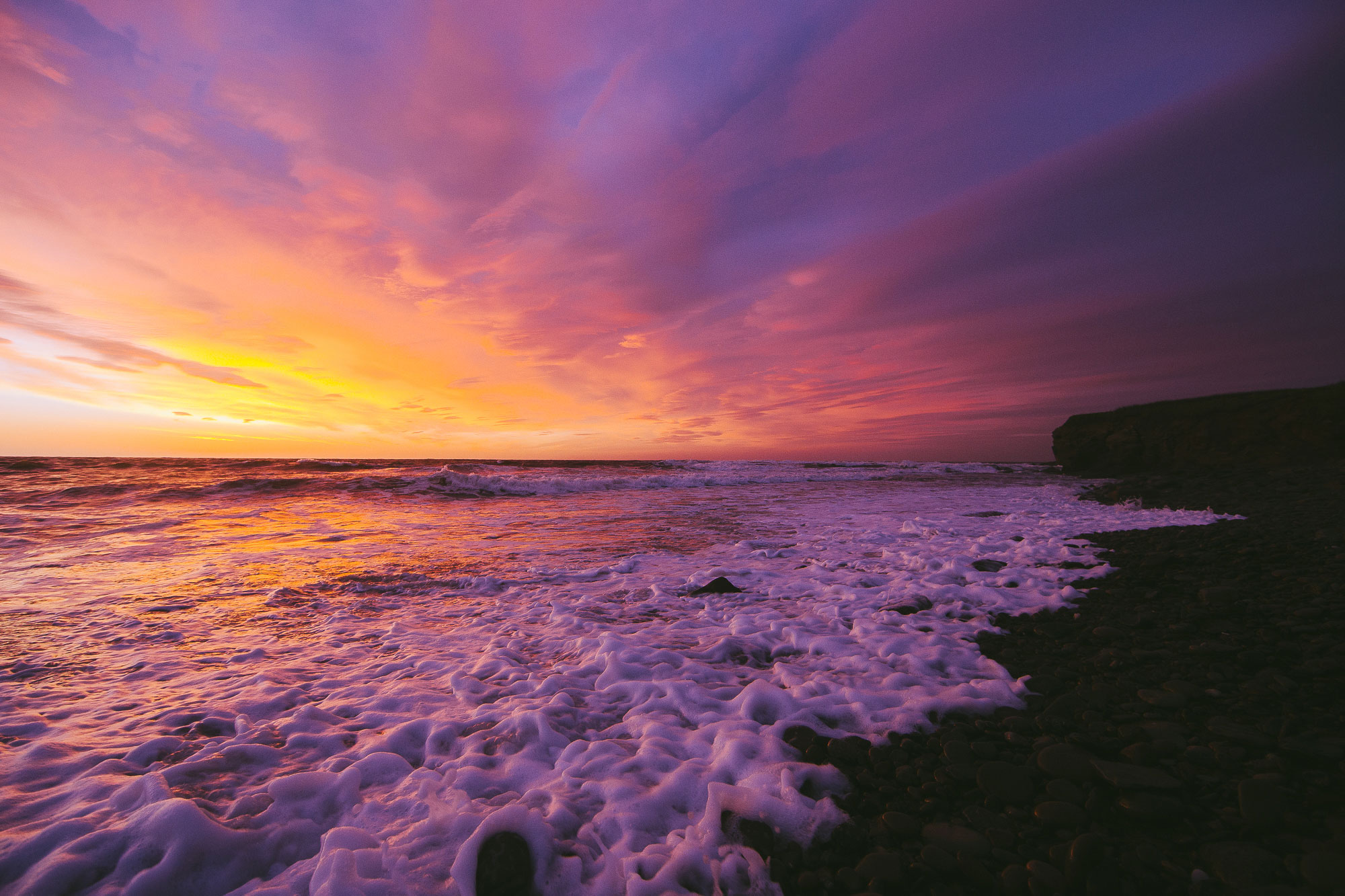
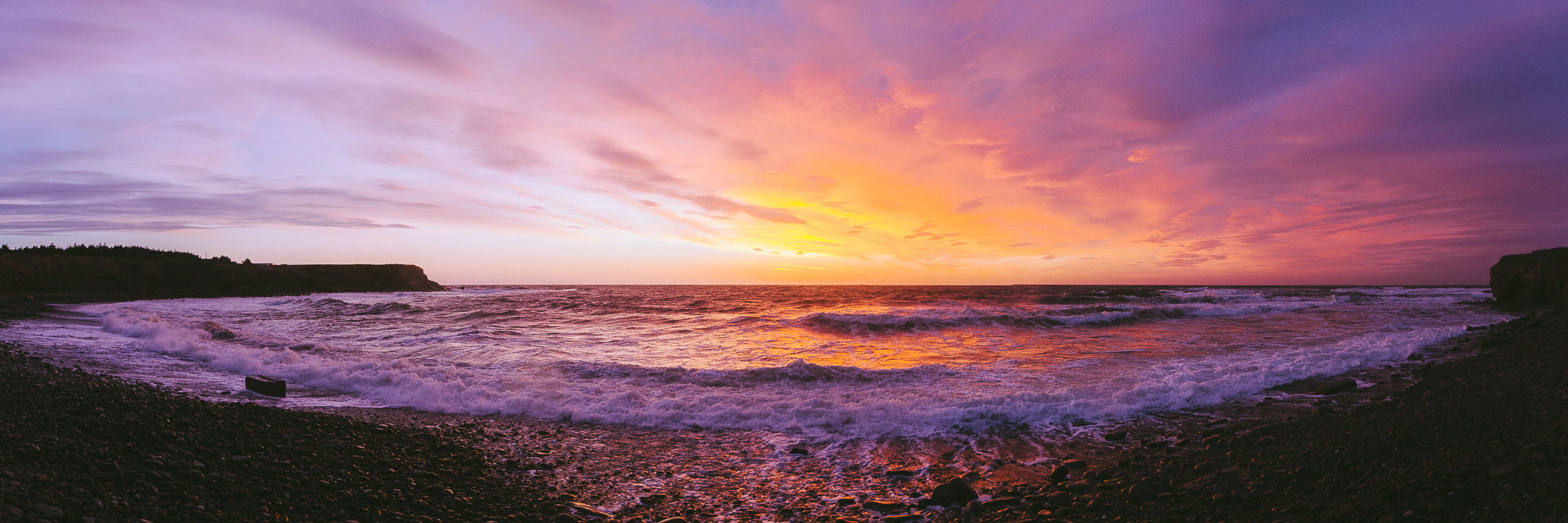
Thanks to Michel Soucy for sending a copy of the forecasted storm surge map for Chéticamp, providing feedback and corrections to the article, and for taking us to shoot photographs of the area. And for the lobster.